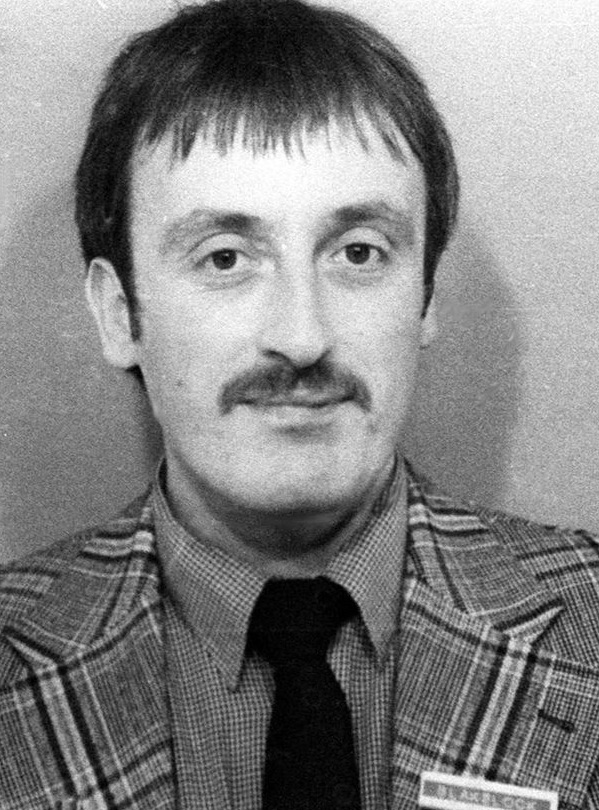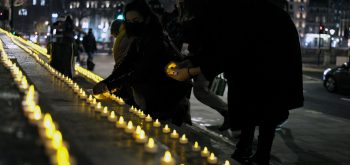[contextly_auto_sidebar id=”GRgA1a96lVMRfVrZAaQgoSU48XtcKXDj”]
There have been three investigations into Keith Blakelock’s murder. The first was arguably doomed from the start. Despite the presence of two senior detectives in Yankee Control on the night he died, the scene was not sealed off. Rather, fearful that more rioting might occur, the police stood by whilst workmen from Haringey Council removed the debris created by the riot. This included emptying the rubbish bins into which weapons, on which there may have been fingerprints, and clothing, which those who carried out the murder might have worn, could have been thrown. Thus the preservation of evidence had been secondary to removing items that could have been used as weapons had rioting re-occurred.
- This is the second of a two part article on the killing of PC Blakelock and Broadwater Farm riot – read the first here
- You can buy Tony Moore’s The Killing of Constable Keith Blakelock published by the Waterside Press this month here
Climate of fear
One of the Metropolitan Police’s most experienced investigators, Detective Chief Superintendent Graham Melvin, was drafted in to take charge of the murder inquiry, leaving the local Detective Chief Superintendent, Andy Gallagher, to investigate all the other crimes committed that night. Both investigations took place in an environment that was extremely hostile to police. The Greater London Council and Haringey Council, together with some of those who resided on The Farm at the time, subsequently claimed that a climate of fear existed because the police treated everyone who had been on the estate that night as a potential criminal.
Melvin, on the other hand, maintained that the climate of fear existed because those involved were frightened that the police would find out they were involved. So, he argued the climate of fear was created by the fear of detection rather than the way the police went about the investigation.
In an attempt to exonerate themselves, a number of witnesses that night made false allegations. But, eventually, six people, three adults Winston Silcott, Mark Braithwaite and Engin Raghip, and three juveniles, Mark Pennant, Jason Hill and Mark Lambie, stood trial, charged with Blakelock’s murder. In the case of the three juveniles, the judge instructed the jury to find Hill and Pennant not guilty and the prosecution withdrew the charge against Lambie. The three adults were, however, unanimously convicted of Blakelock’s murder by the jury.
Immediately, following trial a sustained momentum gathered pace to get the convictions overturned. In the meantime, as a result of comments made by the trial judge, Melvin faced disciplinary tribunal on three counts for breaching the rules governing the detention and questioning of one of the three juveniles in particular. Found guilty on one count, he immediately appealed to the Home Secretary, who in January 1991, overturned the tribunal’s findings.
But the real problem arose when, using a recently designed test known as ESDA (Electrostatic Deposition Analysis), the defence alleged that Melvin and his assistant, Detective Inspector Max Dingle, had fabricated part of a question and answer session involving Winston Silcott. As a result, the Court of Appeal quashed the convictions, Melvin and Dingle were suspended and subsequently charged with perjury and perverting the course of justice. However, at their trial evidence was produced by other handwriting experts which criticised the interpretations placed on it by the prosecution witnesses and they were unanimously acquitted by the jury.
 The second investigation, led by Commander Perry Nove of the City of London Police, lasted from 1992 to 1994. With the agreement of the Director of Public Prosecutions (DPP), a lifetime immunity was offered to witnesses who had been in the group that surrounded Blakelock and had merely kicked or struck him with a blunt instrument as opposed to stabbing and cutting him. The granting of such immunity was subsequently queried by the House of Commons’ Home Affairs Select Committee. In addition, in order to have a reasonable prospect of obtaining a conviction, it was agreed that the basic evidential standard should be set at a minimum of two eyewitnesses prepared to give evidence at court plus any supporting evidence such as photographs. By the end of his inquiry, Nove believed he had identified a total of nine people against whom a murder charge could be preferred. He had two witnesses and, amongst the supporting evidence, was a poem, written by one of the nine in the style of rap describing the murder.
The second investigation, led by Commander Perry Nove of the City of London Police, lasted from 1992 to 1994. With the agreement of the Director of Public Prosecutions (DPP), a lifetime immunity was offered to witnesses who had been in the group that surrounded Blakelock and had merely kicked or struck him with a blunt instrument as opposed to stabbing and cutting him. The granting of such immunity was subsequently queried by the House of Commons’ Home Affairs Select Committee. In addition, in order to have a reasonable prospect of obtaining a conviction, it was agreed that the basic evidential standard should be set at a minimum of two eyewitnesses prepared to give evidence at court plus any supporting evidence such as photographs. By the end of his inquiry, Nove believed he had identified a total of nine people against whom a murder charge could be preferred. He had two witnesses and, amongst the supporting evidence, was a poem, written by one of the nine in the style of rap describing the murder.
Nevertheless, with what seemed impeccable timing, the Crown Prosecution Service (CPS) announced on the eve of the opening of the trial of Melvin and Dingle that the evidence was insufficient to justify criminal proceedings. In doing so, it was suggested that the CPS went against the basic eventual standard originally agreed but refused to discuss why this had been the case.
A third investigation was opened 2003. Led by Detective Superintendent John Sweeney, he had the two witnesses identified during the Nove inquiry and a third subsequently came forward during his inquiry. The person who eventually appeared at court in 2014 was Nicky Jacobs, the writer of the rap poem and who, when had had been arrested for a totally unrelated offence in 2000, had boasted to the arresting officer that he had killed constable Blakelock. The defence quickly discredited the three witnesses. One was alleged to use heroin and drink excessively. The other two had received financial assistance from the police. After deliberating for some six hours the jury returned a not guilty verdict by a majority of 10-2.
Thus, 30 years after his murder, despite three investigations and a total of seven people being charged no-one stands convicted of the Keith Blakelock’s murder.
The investigations and subsequent trials revealed two major flaws. The first flaw was the almost complete absence of scientific evidence, due to the failure of senior officers to ensure that, on the night of Blakelock’s murder, the scene was secured and any physical evidence was preserved. The second major flaw was with the criminal justice system itself in which guilt or innocence is frequently decided by observing or breaking the rules of the game rather than an inquisitorial system that identifies the truth, thereby establishing guilt or innocence.







